
Sarah
There are an estimated 403,000 people living in modern slavery in the United States (GSI 2018). Sex trafficking exists throughout the country. Traffickers use violence, threats, lies, debt bondage and other forms of coercion to compel adults and children to engage in commercial sex acts against their will. The situations that sex trafficking victims face vary, many victims become romantically involved with someone who then forces them into prostitution. Others are lured with false promises of a job, and some are forced to sell sex by members of their own families. Victims of sex trafficking include both foreign nationals and US citizens, with women making up the majority of those trafficked for the purposes of commercial sexual exploitation. In 2015, the most reported venues/industries for sex trafficking included commercial-front brothels, hotel/motel-based trafficking, online advertisements with unknown locations, residential brothels, and street-based sex trafficking. Sarah grew up in California. Her cousin was the leader of a gang and its members were often guarding the house. One of the gang members abused Sarah as a child and when her cousin found out, he was forced to retaliate, and Sarah now owed him. After this incident, she became a source of income and was put to work trafficking drugs. One day, her cousin bought her new dresses, took photos of her to sell to older men. When Sarah tried to seek help at school, she was locked up for a week as punishment. Later, when she was seventeen, Sarah’s cousin was arrested and though she was free from his control, she had nowhere to go and she was soon trafficked again by an old friend into adult entertainment. When she was 23, Sarah stole her second trafficker’s car keys and escaped. After living a life of abuse, trafficking, and drug abuse, Sarah struggled to go about ‘normal life.’ She talks about her journey overcoming her trauma and moving forward.
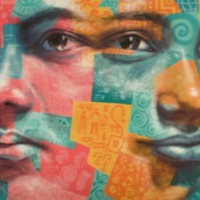
Brian
There are an estimated 403,000 people living in modern slavery in the United States (GSI 2018). Sex trafficking exists throughout the country. Traffickers use violence, threats, lies, debt bondage and other forms of coercion to compel adults and children to engage in commercial sex acts against their will. The situations that sex trafficking victims face vary, many victims become romantically involved with someone who then forces them into prostitution. Others are lured with false promises of a job, and some are forced to sell sex by members of their own families. Victims of sex trafficking include both foreign nationals and US citizens, with women making up the majority of those trafficked for the purposes of commercial sexual exploitation. In 2015, the most reported venues/industries for sex trafficking included commercial-front brothels, hotel/motel-based trafficking, online advertisements with unknown locations, residential brothels, and street-based sex trafficking. Brian* was trafficked by his dad when he was eleven years old. He was taken to an old house for child sexual exploitation. He was locked in a basement and raped, drugged, and beaten by different men.
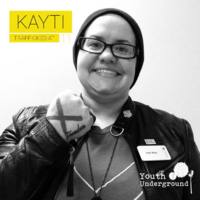
Kayti
There are an estimated 403,000 people living in modern slavery in the United States (GSI 2018). Sex trafficking exists throughout the country. Traffickers use violence, threats, lies, debt bondage and other forms of coercion to compel adults and children to engage in commercial sex acts against their will. The situations that sex trafficking victims face vary, many victims become romantically involved with someone who then forces them into prostitution. Others are lured with false promises of a job, and some are forced to sell sex by members of their own families. Victims of sex trafficking include both foreign nationals and US citizens, with women making up the majority of those trafficked for the purposes of commercial sexual exploitation. In 2015, the most reported venues/industries for sex trafficking included commercial-front brothels, hotel/motel-based trafficking, online advertisements with unknown locations, residential brothels, and street-based sex trafficking. Kayti was trafficked at 11 in the United States. She had experienced sexual abuse at home since the age of two and later, her father took her to a house where she was subjected to child commercial sexual exploitation. Kayti’s exploitation continued until she was twenty-eight years old at which point, she reached out for help.

Jerome
There are an estimated 403,000 people living in modern slavery in the United States (GSI 2018). Sex trafficking exists throughout the country. Traffickers use violence, threats, lies, debt bondage and other forms of coercion to compel adults and children to engage in commercial sex acts against their will. The situations that sex trafficking victims face vary, many victims become romantically involved with someone who then forces them into prostitution. Others are lured with false promises of a job, and some are forced to sell sex by members of their own families. Victims of sex trafficking include both foreign nationals and US citizens, with women making up the majority of those trafficked for the purposes of commercial sexual exploitation. In 2015, the most reported venues/industries for sex trafficking included commercial-front brothels, hotel/motel-based trafficking, online advertisements with unknown locations, residential brothels, and street-based sex trafficking. Jerome was trafficked into child pornography and commercial sexual exploitation by his mother’s boyfriend at the age of five.
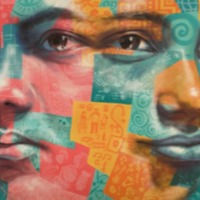
Hannah
There are an estimated 403,000 people living in conditions of modern slavery in the United States (GSI 2018). The US attracts migrants and refugees who are particularly at risk of vulnerability to human trafficking. Trafficking victims often responding to fraudulent offers of employment in the US migrate willingly and are subsequently subjected to conditions of involuntary servitude in industries such as forced labour and commercial sexual exploitation. Hannah experienced the world of sexual exploitation and forced labour when her foster parents adopted her at the age of 12, in Texas, USA.
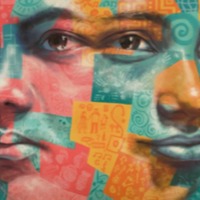
Y
There are an estimated 136,000 people living on conditions of modern slavery in the United Kingdom (Global Slavery Index 2018). According to the 2017 annual figures provided by the National Crime Agency, 5, 145 potential victims of modern slavery were referred through the National Referral Mechanism in 2017, of whom 2,454 were female, 2688 were male and 3 were transgender, with 41% of all referrals being children at the time of exploitation. People are subjected to slavery in the UK in the form of domestic servitude, labour exploitation, organ harvesting and sexual exploitation, with the largest number of potential victims originating from Albania, China, Vietnam and Nigeria. This data however does not consider the unknown numbers of victims that are not reported. Y was trafficked from Nigeria to the United Kingdom at five years old. She was forced to clean, prevented from leaving the house or going to school and made to look after the family’s baby. Y was physically, emotionally and mentally abused by the family that had bought her. When she was 11, the family moved back to Nigeria and sold Y to their friend. She remained in the UK and was forced to work long hours doing housework. When she was 14, she was also forced to make cakes for the woman to sell and make money. She finally ran away and went to live with a foster family while the police and social services worked on her case.
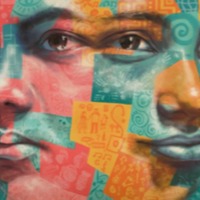
Esosa
There are an estimated 1,386,000 people living in modern slavery in Nigeria (GSI 2018). Nigeria is a source, transit, and destination country for women and children subjected to forced labour and sex trafficking, and a source country for men subjected to forced labour. Women and girls are victims of forced labour in domestic service both within the country as well as being trafficked to other West and Central African countries. Esosa experienced trafficking and domestic servitude in Nigeria. She was then able to return to school and went on to study theatre arts at university. She is now a professional dancer and performer. Esosa supports anti-trafficking efforts in her community, including through NGO Y, by choreographing performances to raise awareness of the dangers of irregular migration.
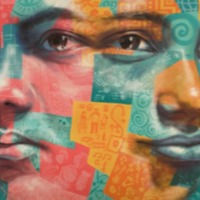
Kat Rosenblatt
There are an estimated 403,000 people living in modern slavery in the United States (GSI 2018). Sex trafficking exists throughout the country. Traffickers use violence, threats, lies, debt bondage and other forms of coercion to compel adults and children to engage in commercial sex acts against their will. The situations that sex trafficking victims face vary, many victims become romantically involved with someone who then forces them into prostitution. Others are lured with false promises of a job, and some are forced to sell sex by members of their own families. Victims of sex trafficking include both foreign nationals and US citizens, with women making up the majority of those trafficked for the purposes of commercial sexual exploitation. In 2015, the most reported venues/industries for sex trafficking included commercial-front brothels, hotel/motel-based trafficking, online advertisements with unknown locations, residential brothels, and street-based sex trafficking. Kat Rosenblatt grew up in an abusive home in South Florida. After her mother left her father and too Kat to a hotel, Kat was befriended by a young girl who over the course of a month groomed her into sex tourism. The first time Kat Rosenblatt’s traffickers attempted to sell her to an older man, she resisted and was left for dead in the street. Though she was able to escape this situation, Kat was trafficked again by a friend’s father who later planted drugs in her school bag. Kat was suspended and became a drug addict. However, after overcoming her addictions, Kat obtained a PhD, wrote a book about her experience and founded her organisation There Is Hope For Me.
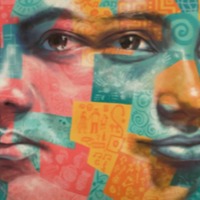
Penelope
There are an estimated 403,000 people living in modern slavery in the United States (GSI 2018). Sex trafficking exists throughout the country. Traffickers use violence, threats, lies, debt bondage and other forms of coercion to compel adults and children to engage in commercial sex acts against their will. The situations that sex trafficking victims face vary, many victims become romantically involved with someone who then forces them into prostitution. Others are lured with false promises of a job, and some are forced to sell sex by members of their own families. Victims of sex trafficking include both foreign nationals and US citizens, with women making up the majority of those trafficked for the purposes of commercial sexual exploitation. In 2015, the most reported venues/industries for sex trafficking included commercial-front brothels, hotel/motel-based trafficking, online advertisements with unknown locations, residential brothels, and street-based sex trafficking. Penelope’s* father became involved in criminal activity when she was a child which led to the repossession of their house. They moved into his friend’s house and when they became unable to pay rent, her father forced Penelope into child sexual exploitation, offering her to his friends as payment. One night when she was nine years old, Penelope was taken by her father’s friend and locked her in a room, where she was raped for days by adult men. After a few days of ‘breaking in’, Penelope was trafficked across the backroads of Mississippi, forced to see 15-20 men each night. After three years, Penelope’s mother came for her after being left by her father. It was a long road to recovery, Penelope entered into an abusive relationship as a teenager and suffered with alcohol addiction in college. She was finally able to receive help from a friend who introduced her to a church.
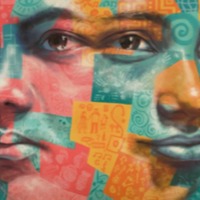
Avery
There are an estimated 403,000 people living in modern slavery in the United States (GSI 2018). Sex trafficking exists throughout the country. Traffickers use violence, threats, lies, debt bondage and other forms of coercion to compel adults and children to engage in commercial sex acts against their will. The situations that sex trafficking victims face vary, many victims become romantically involved with someone who then forces them into prostitution. Others are lured with false promises of a job, and some are forced to sell sex by members of their own families. Victims of sex trafficking include both foreign nationals and US citizens, with women making up the majority of those trafficked for the purposes of commercial sexual exploitation. In 2015, the most reported venues/industries for sex trafficking included commercial-front brothels, hotel/motel-based trafficking, online advertisements with unknown locations, residential brothels, and street-based sex trafficking. Avery* was 12 years old when she was trafficked into commercial sexual exploitation by a woman who promised her a job in modelling. She was kidnapped, beaten, raped, deprived of food and water, and when she returned home remained under the control of her trafficker until she was 18 years old.
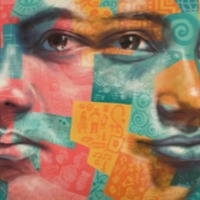
Miriam A.
There are an estimated 136,000 people living on conditions of modern slavery in the United Kingdom (Global Slavery Index 2018). According to the 2017 annual figures provided by the National Crime Agency, 5, 145 potential victims of modern slavery were referred through the National Referral Mechanism in 2017, of whom 2,454 were female, 2688 were male and 3 were transgender, with 41% of all referrals being children at the time of exploitation. People are subjected to slavery in the UK in the form of domestic servitude, labour exploitation, organ harvesting and sexual exploitation, with the largest number of potential victims originating from Albania, China, Vietnam and Nigeria. This data however does not consider the unknown numbers of victims that are not reported. Miriam A. was abused from a young age and into her marriage. She was offered the opportunity to come to Britain and start a new life away from abuse. She was promised the opportunity to study and that her children would join her later. Instead she was forced into domestic work, working 16 to 18 hours a day with no breaks. She was forced to do all cooking, cleaning, babysitting and care work. The family controlled when she slept, when she woke and what she ate. If she was allowed to speak to her children, her
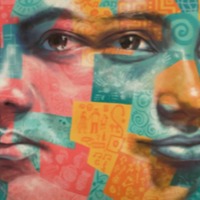
Anneke Lucas
There are an estimated 23,000 people in modern slavery in Belgium (GSI 2018). People are subjected to sex and labour trafficking in the country, with foreign-born people coming primarily from Asia, Eastern Europe, North and Sub-Saharan Africa. Labour traffickers exploit men in restaurants, bars, sweatshops, horticulture, fruit farms, construction, cleaning businesses and retail shops, they also exploit foreign workers in domestic servitude. Sex trafficker exploit Belgian girls, some of whom recruited by local pimps, and foreign children, including Roma. Forced begging within the Romani community in Belgium also occurs, while asylum seekers often have their applications for legal status denied, increasing their vulnerability to trafficking. Anneke was sold by her mother as a child sex slave to a paedophile network. Anneke was raped daily by older men, many of them prominent Belgian politicians, until she was eleven years old. At eleven, when she was considered no longer useful to the network, she was tortured to be killed. She was saved from death by a man negotiating with the politician in charge of the network. Anneke talks about her experience of therapy to work through her experiences of trauma.
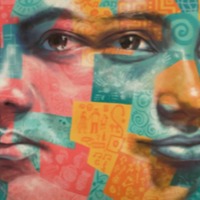
Micheline Slattery
There are an estimated 59,000 people living in modern slavery in Haiti (GSI 2018). Traffickers exploit foreign and domestic victims in Haiti and abroad. Most of Haiti’s trafficking cases involved children in forced labour in domestic service, known as the restavèk system. Children are often physically abused, receive no payment for services rendered and have significantly lower school enrolment rates. Many children flee their situation of domestic servitude, becoming street children at further risk of re-trafficking. Micheline Slattery was orphaned and made a restavèk by her aunt when she was five years old. She was forced to cook, clean and care for the families’ children, being the first to rise and last to go to bed. Micheline was subjected to verbal and physical abuse daily. When she was thirteen her aunt took her to the United States where Micheline thought she was going to be with family, but upon arrival she was sold again as a restavèk to a woman in Connecticut. She finally left her situation when she was 18 years old and now gives talks across the country to raise awareness of the rising number of restavèks in the US.
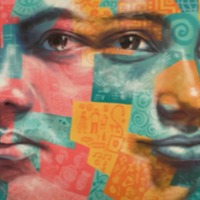
Ram
There are an estimated 610,000 people living in conditions of modern slavery in Thailand (GSI 2018). The country is a source, destination and transit country for men, women and children subjected to forced labour and sex trafficking. Thailand’s commercial sex indusrty remains vast, increasing vulnerabilities for sex trafficking. Children are victims of sex trafficking in brothels, massage parlours, bars, karaoke lounges, hotels and private residences. People are trafficked from other Southeast Asian countries, Sri Lanka, Russia, Uzbekistan and some African countries. It is also a transit country for people from China, North Korea, Bangladesh, India and Burma. Ram ran away from an abusive home and was forced to live on the streets. One day while stealing food from a local market, Ram was kidnapped by a street gang. Ram was forced to steal from tourists during the day and at night was sold for sex to older men. Ram’s exploitation finally came to an end when his trafficker was arrested.
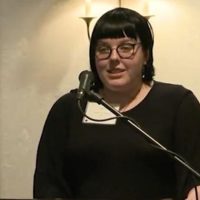
Kylee
There are an estimated 403,000 people living in modern slavery in the United States (GSI 2018). Sex trafficking exists throughout the country. Traffickers use violence, threats, lies, debt bondage and other forms of coercion to compel adults and children to engage in commercial sex acts against their will. The situations that sex trafficking victims face vary, many victims become romantically involved with someone who then forces them into prostitution. Others are lured with false promises of a job, and some are forced to sell sex by members of their own families. Victims of sex trafficking include both foreign nationals and US citizens, with women making up the majority of those trafficked for the purposes of commercial sexual exploitation. In 2015, the most reported venues/industries for sex trafficking included commercial-front brothels, hotel/motel-based trafficking, online advertisements with unknown locations, residential brothels, and street-based sex trafficking. Kylee Gregg was trafficked in rural Ohio from the age of 10 until she was 14, beginning in 2010. She told her story at the age of 18, as a college student, during an interview with Francine Sporenda for the Révolution Féministe website. It was originally published in French and then in English by Nordic Model Now!, a UK secular, feminist, grassroots women’s group campaigning for the abolition of prostitution and related practices. Kylee identifies as a lesbian radical feminist and runs an activist organisation called Womyn Unleashed.
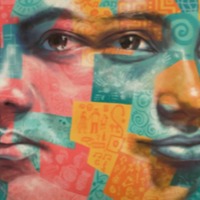
Jewell
There are an estimated 403,000 people living in modern slavery in the United States (GSI 2018). Sex trafficking exists throughout the country. Traffickers use violence, threats, lies, debt bondage and other forms of coercion to compel adults and children to engage in commercial sex acts against their will. The situations that sex trafficking victims face vary, many victims become romantically involved with someone who then forces them into prostitution. Others are lured with false promises of a job, and some are forced to sell sex by members of their own families. Victims of sex trafficking include both foreign nationals and US citizens, with women making up the majority of those trafficked for the purposes of commercial sexual exploitation. In 2015, the most reported venues/industries for sex trafficking included commercial-front brothels, hotel/motel-based trafficking, online advertisements with unknown locations, residential brothels, and street-based sex trafficking. Jewell Baraka was exploited for three years in prostitution and three years in pornography in the 1980s and 1990s, from age 11 to 17, in Portland, Oregon. Her narrative is from an interview with Francine Sporenda for the Révolution Féministe website, originally published in French and then in English by Nordic Model Now!, a UK secular, feminist, grassroots women’s group campaigning for the abolition of prostitution and related practices.
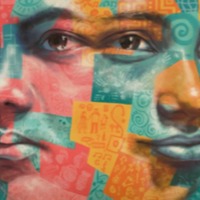
Flora
There are an estimated 403,000 people living in modern slavery in the United States (GSI 2018). Sex trafficking exists throughout the country. Traffickers use violence, threats, lies, debt bondage and other forms of coercion to compel adults and children to engage in commercial sex acts against their will. The situations that sex trafficking victims face vary, many victims become romantically involved with someone who then forces them into prostitution. Others are lured with false promises of a job, and some are forced to sell sex by members of their own families. Victims of sex trafficking include both foreign nationals and US citizens, with women making up the majority of those trafficked for the purposes of commercial sexual exploitation. In 2015, the most reported venues/industries for sex trafficking included commercial-front brothels, hotel/motel-based trafficking, online advertisements with unknown locations, residential brothels, and street-based sex trafficking.Flora was trafficked in to prostitution at the age of 14 when she ran away from home after her mother committed suicide. She left with who she thought was her boyfriend, however within a week he had trafficked her to a different state and she was forced to provide sexual services.
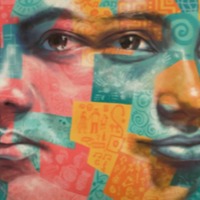
Peter
Despite having the lowest regional prevalence of modern slavery in the world, Europe remains a destination, and to a lesser extent, a source region for the exploitation of men, women and children in forced labour and commercial sexual exploitation. According to the most recent Eurostat findings, European Union (EU) citizens account for 65 percent of identified trafficked victims within Europe. These individuals mostly originate from Eastern Europe, including Romania, Bulgaria, Lithuania and Slovakia. In Albania and Bosnia and Herzegovina, the European Parliament has identified corruption and the judicial system as reform challenges towards accession talks within the EU. Peter ran away from home after being abused by his father. After living on the streets for a year, his uncle arranged for him to leave the country. Peter was sold by his uncle and smuggled across Europe against his will.
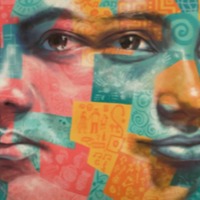
Christelle
There are an estimated 9000 people living in conditions of modern slavery in Gabon (GSI 2018). The country is a primary destination and transit country for West and Central African men, women and children subjected to forced labour and sex trafficking. Boys are forced to work as street vendors, mechanics, or in microbus transportation and the fishing sector. Girls are subjected to domestic servitude and forced labor in markets or roadside restaurants. Gabonese children are exploited as market vendors in eastern provinces of the country. In some cases, families willingly give children to intermediaries who fraudulently promise education or terms of employment they ultimately do not provide, instead subjecting the children to forced labor through debt bondage. Some traffickers procure falsified documents for child trafficking victims to make them appear older than 18 years old to avoid prosecution under the child trafficking law. Christelle’s home village is Assahoun, in the southwest of Togo (Maritime Region). She is the eldest of five children and was in Standard Five at the Catholic Primary School when she left with traffickers on the long journey to Gabon. Today, Christelle is back in her village with her parents. She is under apprenticeship to become a seamstress. Her training is being supported as part of a joint effort by Plan Togo and the Department for the Protection and Promotion of the Family and Children and is financed by Plan Togo.
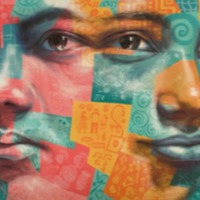
Terry
There are an estimated 403,000 people living in modern slavery in the United States (GSI 2018). Sex trafficking exists throughout the country. Traffickers use violence, threats, lies, debt bondage and other forms of coercion to compel adults and children to engage in commercial sex acts against their will. The situations that sex trafficking victims face vary, many victims become romantically involved with someone who then forces them into prostitution. Others are lured with false promises of a job, and some are forced to sell sex by members of their own families. Victims of sex trafficking include both foreign nationals and US citizens, with women making up the majority of those trafficked for the purposes of commercial sexual exploitation. In 2015, the most reported venues/industries for sex trafficking included commercial-front brothels, hotel/motel-based trafficking, online advertisements with unknown locations, residential brothels, and street-based sex trafficking. Terry was sexually abused at the age of 15 by her boss, an event that she pinpoints as the seed from which her problems began. That same year she suffered a number of other traumas that led to the beginning of her cocaine use. 10 years later, married with children, Terry’s drug use became out of control and she lost custody of her children and ended up on the streets. Within two months of this, she found herself trafficked in to a life of prostitution. Here Terry, now executive director of the survivor led organization Breaking Free tells of the environment in which many women subjected to forced prostitution grow up in, describes who it is that sets the demand for prostitutes, and tells of the warning signs among children vulnerable to trafficking.